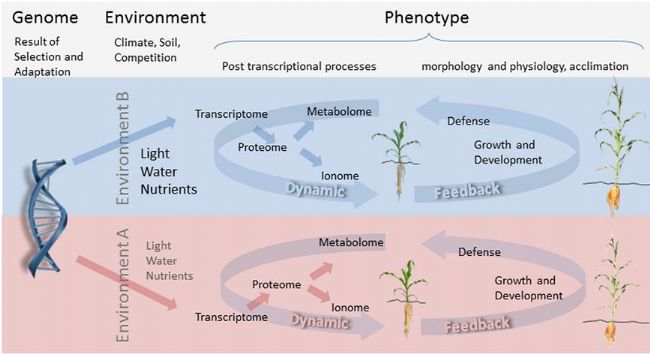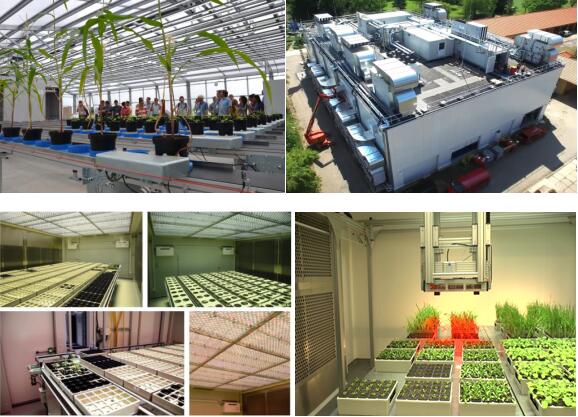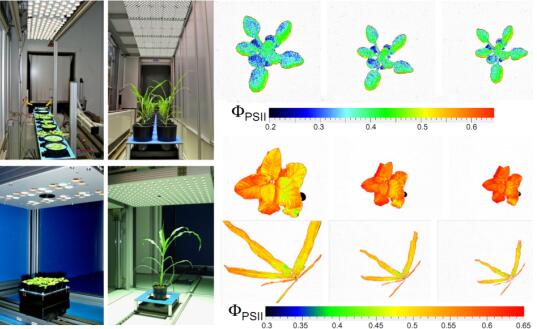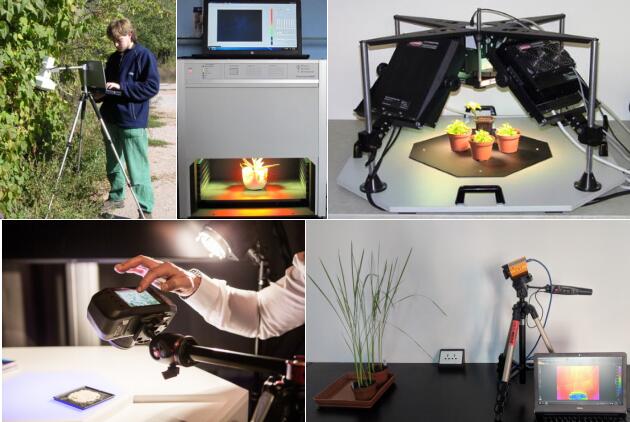- Overview: flexible, convenient, low-cost plant phenotype technical solutions

At present, various international and domestic research institutions and universities are constructing large-scale high-throughput plant phenotypic analysis platforms, among which Photon Systems Instruments' PlantScreen high-throughput plant phenotypic analysis platform is the most advanced technology representative. These platforms generally consist of a plant phenotype imaging analysis unit, a high-throughput sample automatic transfer unit, an environmental control unit, software, and a control unit. Although powerful, it also has shortcomings such as long construction period, high cost, and difficulty in experimental design.

| Â | Large high-throughput plant phenotypic analysis platform | Modular plant phenotypic analysis system |
| System composition | Plant phenotype imaging analysis unit, high-throughput sample automatic transfer unit, environmental control unit, software and control unit, etc., generally large in size | Multiple sets of small plant phenotyping instruments, which can be laboratory, field, portable or even handheld instruments |
| Installation conditions | Generally, it takes tens to hundreds of square meters of laboratories, greenhouses or culture rooms, and it needs supporting power supply and water supply facilities. Field research requires special sample sites and installation facilities. | Generally only need a few square meters of space under normal laboratory conditions, portable or handheld instruments can be applied to a variety of indoor or field conditions |
| Research object | Generally for whole plants, such as Arabidopsis, corn, rice, etc. | Research objects are not limited, such as leaves, fruits, wheat ears, flowers, whole plants, etc. |
| Sample throughput | High-throughput automatic measurement from dozens of strains, hundreds of strains, or even thousands of samples | Typically manual measurement for a single sample |
| Experimental cycle | Equipped with environmental control unit, the whole life history of plants can be measured under ideal conditions, and the single measurement period can be up to one hour. | Measuring the life history of a plant at one or a few stages, generally without high-throughput monitoring of the full life history |
| system design | Need to be customized according to specific research objects, installation locations, experimental needs, etc. | Because there are no restrictions on installation conditions, research objects, etc., it is only necessary to determine the module according to the experimental requirements. |
| analytical skills | Imaging analysis techniques such as visible light RGB imaging, chlorophyll fluorescence imaging, hyperspectral imaging, and thermal imaging | In addition to the above imaging techniques, various non-imaging plant physiology research techniques such as infrared gas analysis technology, handheld chlorophyll fluorescence/hyperspectroscopy, lysimeter technology, etc. can be used. |
| System flexibility | Generally only used at the installation site, each imaging unit cannot be used as a separate instrument | Each module is a separate instrument that can be used in different locations |
| Expansion and upgrade | Technically difficult and costly | Modules can be added at any time based on experimental progress |
| Installation cycle | It usually takes at least several days to a week to install, and it may take more than a month from training to good operation of the entire platform. | Generally, the installation and commissioning can be completed in one day, and the experiment can be started after the training. |
| System cost | Usually need millions or even tens of millions of yuan | Generally from hundreds of thousands to millions of yuan |
For example, although it is difficult to expand and upgrade large-scale phenotype platforms. But there are also cases in reality.
The Leibniz Institute of Plant Genetics and Crop Plant Research (IPK) has three sets of older plant phenotypic platforms that are not capable of modulated chlorophyll fluorescence imaging. IPK worked with Photon Systems Instruments to upgrade the FluorCam-modulated chlorophyll fluorescence imaging unit originally used in the PlantScreen high-throughput plant phenotypic imaging system for these three systems, and the chlorophyll fluorescence imaging unit is compatible with the original system. Complete high-throughput photosynthetic phenotypic measurements (Figure 3).

As the sole agent and after-sales service center of Photon Systems Instruments in China, Yiketai Eco-Technology Co., Ltd., in addition to providing PlantScreen high-throughput plant phenotypic analysis system and corresponding technical services for Chinese scientists, can also provide FluorCam chlorophyll fluorescence imaging. Technology-based modular plant phenotypic analysis technology program. The technical solutions can be flexibly assembled according to the needs of users. All modules are from the world's leading instrument manufacturers, and have published a large number of SCI documents to ensure data reliability and recognition. At the same time, Ekotech's EcoLab Ecological Laboratory itself is equipped with multiple modular plant phenotype instruments, which can provide technical services and scientific research cooperation for users.
In the follow-up, we will introduce various modular plant phenotypic analysis technical solutions through domestic and foreign scientific research cases and published literature, so stay tuned.

references:
- Schork N J. Genetics of complex disease—Approaches, problems, and solutions. Am J Resp Crit Care, 1997, 156: S103–S109
- Walter A et al. Plant phenotyping: from bean weighing to image analysis , Plant Methods, 2015, 11(14)
- Junker A, Muraya MM, Weigelt-Fischer K, Arana-Ceballos F, Klukas C, Melchinger AE, Meyer RC, Riewe D, Altmann T. Optimizing experimental procedures for quantitative evaluation of crop plant performance in high throughput phenotyping systems. Front Plant Sci 2015. doi:10.3389/fpls2014.00770.
- Tschiersch H., Junker A., ​​Meyer RC, & Altmann, T. (2017). Establishment of integrated protocols for automated high throughput kinetic chlorophyll fluorescence analyses. Plant Methods, 13, 54.
we are manufcatory and can supply the best price and good quality .
it is full range of CYLINDER LINER for the following type :
AAA) YANMAR DIESEL ENGINE
K(D)L, KFL-T, 6MAL-H/T/HT/DT, S165-T/ST/EN,
S185-ST/UT/ET, M200L-UN/SN/EN/M220L-UN/SN/EN / N 330
BBB) DAIHATSU DIESEL ENGINE
PS22/26/ DS18(A)/ DS(B)22/
DL20/22/28/ DK20 / DK 28
CCC) NIIGATA DIESEL ENGINE
6L(M)25BX/6M28AFTE/BX/6M31X/EZ/EX/ 31AFTE /34AGT
DDD) AKASAKA
AH30/AH38/ AH40/D/F/ A31/34/37/41/ DM28/30/33/36/38/40(A)K/ DM46/ UEC37H-HB/ UEC 37/88H
UEC 37LA/ UEC45LA/ UEC52LA/ UEC52HA/ UEC60HA/ UEC60LS/ UEC45HA/115 ALL UET TYPE
EEE) MITSUBISHI (KOBE AND AKASAKA )
45/75C/ 45/80D/ 52/90D/ 52/105D.E/
UEC37H-IIB/ UET37/88HA/UEC45HA.LA/ UEC52HA.LA/ S6B/
ETC
FFF) HANSHIN
6LU(D)26/ 6LU(N)28A/ 6LU(D)32/6LU(D)35/ 6LU(S)38/ 40 / 6LU40/ 6LU46A/ 6LU50A/
6EL30/ EL(S)32 /6EL(S)35/ 6EL38/ 6EL40/ 6EL(S)44/50A/
GGG) MAN B&W
S35MC/L35MCE/L50MCE/ L60MCE/ 40/54A
HHH) MITSUBISHI PURIFIER
SJ700~SJ1800/SJ 2000
III)SULZER
RND 68 RND 76 RD 44
JJJ) MAKITA
GSLH – 633 637 KSLH -633 637
Kkk) PIELSTICK
PC 2-5 PC 2-6
Engine Cylinder Liner,Engine Part Cylinder Liner,Diesel Engine Liner,Cylinder Liner For Ship,Cylinder Liner For Diesel Engine
ZhouShan HeCheng Machinery Co., LTD. , https://www.hcmarineparts.com